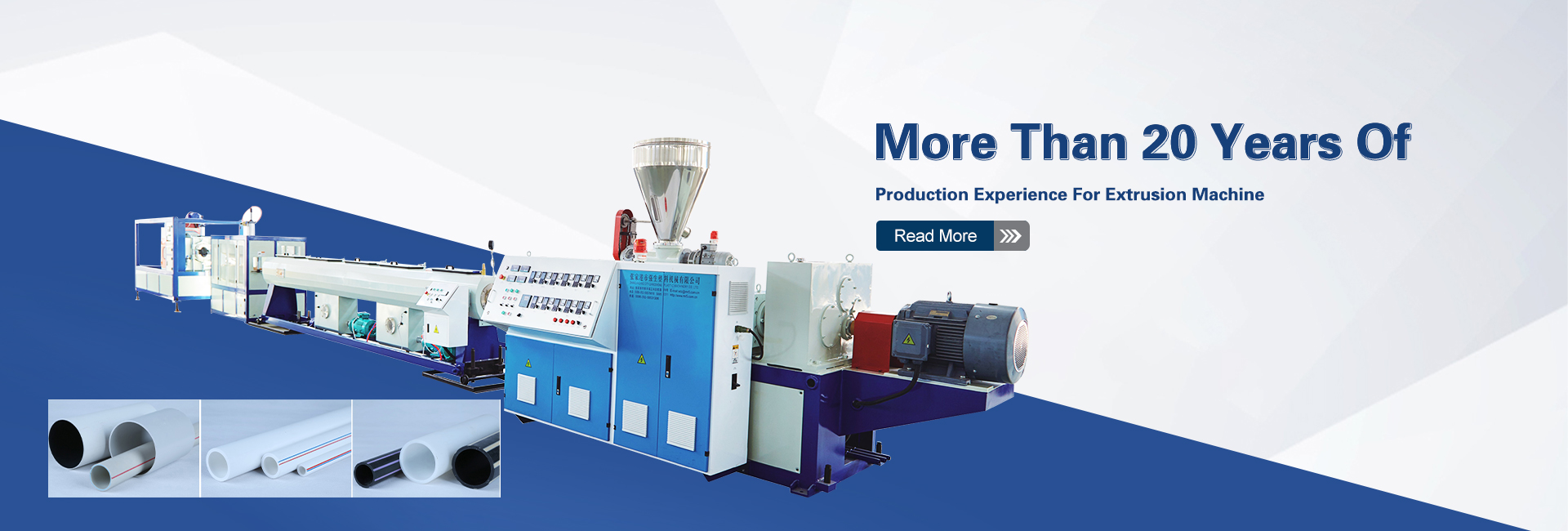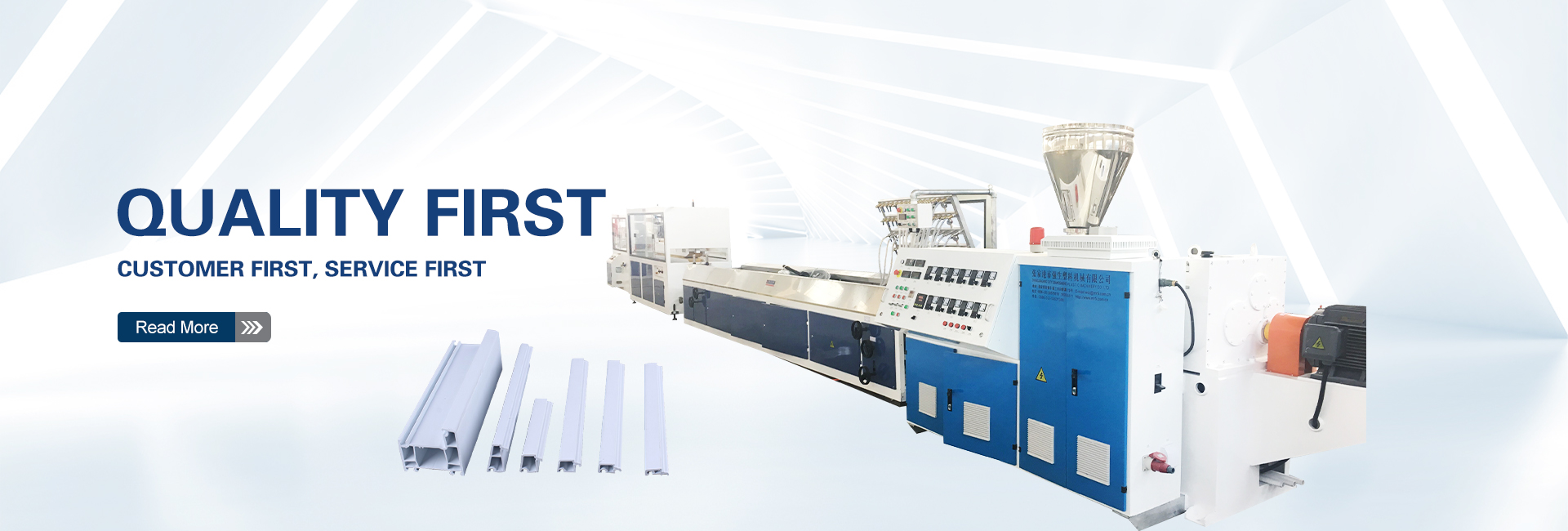As a leading Pipe Extrusion Machine Manufacturer, Qiangshengplas is committed to providing our customers with comprehensive support and troubleshooting guidance. In this article, we delve into the common causes of a non-starting main motor in plastic pipe extrusion machines and offer practical solutions to help you restore normal operation and maintain production efficiency.
Latest Case Study: Addressing a Main Motor Startup Issue in a Customer’s Pipe Extrusion Machine
Recently, we received an inquiry from a customer in Vietnam regarding their Qiangshengplas plastic pipe extrusion machine’s main motor failing to start. Upon investigation, we identified the root cause of the issue and provided the customer with a detailed troubleshooting guide and corrective action plan. This case study highlights the importance of prompt and accurate troubleshooting to minimize downtime and maintain production continuity.
Understanding the Causes of a Non-Starting Main Motor
A non-starting main motor in a plastic pipe extrusion machine can be caused by a variety of factors, ranging from electrical issues to mechanical problems. Identifying the underlying cause is crucial for effective troubleshooting and repair.
1. Electrical Supply Issues:
a. Power Supply Interruptions: Check for power outages or disruptions in the facility’s electrical supply.
b. Blown Fuses or Tripped Circuit Breakers: Inspect fuses and circuit breakers to identify any that have blown or tripped, indicating an overload or short circuit.
c. Loose or Damaged Wiring: Examine electrical wiring for any loose connections, frayed wires, or signs of damage.
2. Motor Control Issues:
a. Faulty Contactors: Check the motor contactors for any signs of wear, damage, or welding of contacts.
b. Defective Control Circuitry: Inspect the control circuitry, including relays, timers, and switches, for any faults or malfunctions.
c. Programming Errors: Verify the correctness of the motor control programming, ensuring proper settings and sequences.
3. Mechanical Problems:
a. Seized Bearings: Check for seized bearings in the motor or gearbox, which could prevent the motor from rotating.
b. Mechanical Brake Engagement: Ensure that mechanical brakes, if present, are fully disengaged and not preventing motor rotation.
c. Excessive Load: Assess the load on the motor to identify any potential overloads that could be stalling the motor.
Effective Solutions for a Non-Starting Main Motor
Addressing a non-starting main motor in a plastic pipe extrusion machine requires a systematic approach that combines thorough troubleshooting and appropriate corrective actions.
1. Electrical Supply Checks:
a. Verify Power Availability: Confirm that power is available to the machine and that the main power switch is turned on.
b. Inspect Fuses and Breakers: Reset tripped circuit breakers and replace blown fuses, ensuring they are properly rated for the motor’s current draw.
c. Test Wiring Integrity: Use a multimeter to check for continuity and proper insulation in all electrical wiring.
2. Motor Control Investigation:
a. Examine Contactors: Visually inspect contactors for any signs of damage or welding of contacts. Use a multimeter to test for proper operation.
b. Troubleshoot Control Circuitry: Trace the control circuitry, checking for any loose connections, faulty components, or programming errors.
c. Consult Control Documentation: Refer to the machine’s control documentation for specific troubleshooting procedures and wiring diagrams.
3. Mechanical Checks and Repairs:
a. Check for Seized Bearings: Attempt to manually rotate the motor shaft. If it is seized, bearings may need replacement.
b. Verify Brake Disengagement: Ensure that mechanical brakes are fully disengaged and not preventing motor rotation.
c. Evaluate Load Conditions: Reduce the load on the motor, if possible, to determine if an overload is causing the issue.
Conclusion
By understanding the root causes of a non-starting main motor in plastic pipe extrusion machines and implementing effective troubleshooting and repair procedures, Pipe Extrusion Machine Manufacturers can empower their customers to quickly resolve downtime, restore production efficiency, and extend the lifespan of their valuable machinery. At Qiangshengplas, we are dedicated to providing our customers with the expertise and support they need to achieve operational excellence.
Latest Case Study: Addressing a Main Motor Startup Issue in a Customer’s Pipe Extrusion Machine
Recently, we received an inquiry from a customer in Vietnam regarding their Qiangshengplas plastic pipe extrusion machine’s main motor failing to start. Upon investigation, we identified the root cause of the issue as a faulty contactor in the motor control circuit. The contactor, responsible for switching the motor on and off, had welded contacts, preventing the flow of electricity to the motor.
To resolve the issue, we advised the customer to replace the faulty contactor with a new one of the same specifications. The customer promptly replaced the contactor, and the main motor successfully started, restoring normal operation of the pipe extrusion machine. This case study highlights the importance of timely maintenance and prompt troubleshooting to minimize downtime and maintain production efficiency.
As a leading Pipe Extrusion Machine Manufacturer, Qiangshengplas is committed to providing our customers with comprehensive support and troubleshooting guidance. We encourage our customers to regularly inspect and maintain their machines, and to contact us promptly if they encounter any issues. With our expertise and support, our customers can ensure the smooth and efficient operation of their plastic pipe extrusion machines, maximizing their production capacity and profitability.
Post time: Jun-14-2024



